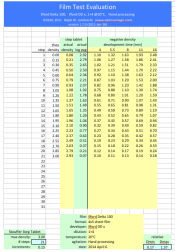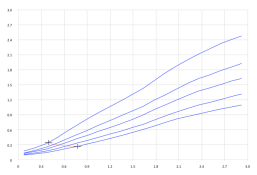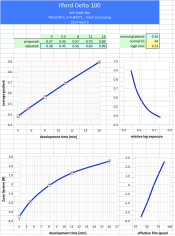Bill Burk
Subscriber
- Joined
- Feb 9, 2010
- Messages
- 9,363
- Format
- 4x5 Format
... So, my suggestion to use f/8 at 1/500 of a second (if my metered board is f/5.6 at 1/60) would work too, right? I'm not going to use 1/60 since some of you think this may be wrong.
I think the fastest speeds are the least likely to be accurate.
You're familiar with the way the leaf shutter works right? If you use B and press slowly you may be able to watch as the blades open. First the middle opens, and then there is a star shape that expands outward until wide open, then it closes down to a star and then closed.
At the fastest speeds, when used with a wide open aperture, you get a bell-curve of exposure, which adds-up to the equivalent of your shutter speed.
I'd need someone who knows to chime in to explain what relatively fast shutter speeds have the problem of opening and closing the worst... and at which relatively slower speed it becomes a non-issue.
I don't think using 1/60 is particularly wrong, I just think your shutter is really running at 1/40. Because I know that you are a meticulous worker and every other variable is checking out. I think in your case, shutter speeds are the weakest link in the whole chain.














